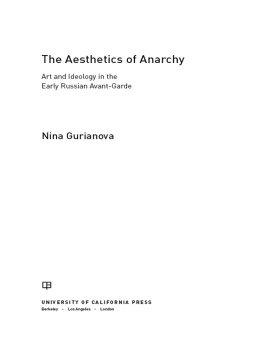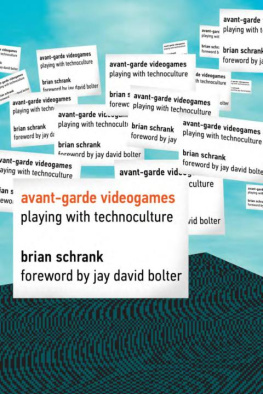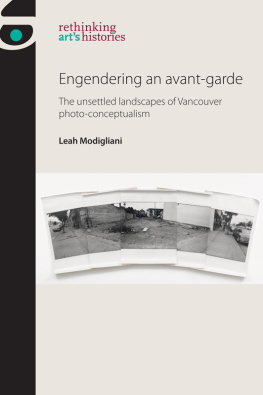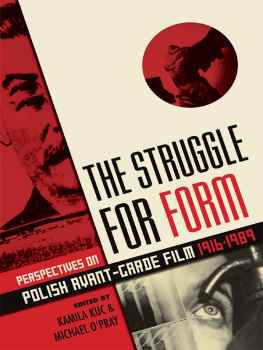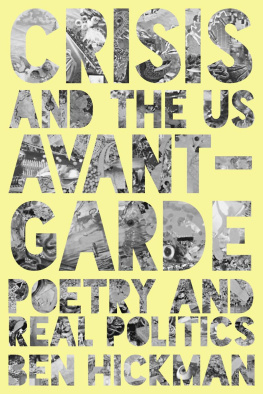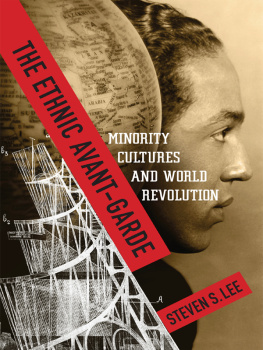University of California Press, one of the most distinguished university presses in the United States, enriches lives around the world by advancing scholarship in the humanities, social sciences, and natural sciences. Its activities are supported by the UC Press Foundation and by philanthropic contributions from individuals and institutions. For more information, visit www.ucpress.edu.
Every effort has been made to identify the rightful copyright holders of material not specifically commissioned for use in this publication and to secure permission, where applicable, for reuse of all such material. Credit, if and as available, has been provided for all borrowed material either on-page, on the copyright page, or in an acknowledgement section of the book. Errors or omissions in credit citations or failure to obtain permission if required by copyright law have been either unavoidable or unintentional. The author and publisher welcome any information that would allow them to correct future reprints.
University of California Press, Ltd.
London, England
The paper used in this publication meets the minimum requirements of ANSI/NISO Z39.48-1992 (R 2002) (Permanence of Paper).
Acknowledgments
My research for this book was generously supported by the Society of Fellows, Harvard University, the William F. Milton Fund award, and the National Endowment for the Humanities Fellowship at the National Humanities Center in North Carolina. The unique intellectual environment provided by the Society of Fellows helped to lay the foundation for this book, while my sabbatical at the National Humanities Center was instrumental in bringing it to completion. These residential fellowships gave me the true luxury of sharing my ideas with others, and the ongoing discussions with William Todd, Dan Aaron, Mark Antliff, Bernard Bailyn, Svetlana Boym, James Dawes, Michelle Facos, Walter Gilbert, Patricia Leighten, Lei Liang, Barry Mazur, Ellen Scary, Amartya Sen, Isabelle Wunsche, and Dimitrios Yatromanolakis enriched my initial approach and inspired me to expand and sharpen my argument.
I am deeply grateful to Jack Flam and Charlene Woodcock who encouraged me to move forward and helped to shape this project from its inception. I also thank especially Boris Gasparov, Robert Belknap, John Malmstad, William Todd, John Bowlt, Clare Cavanagh, Catherine Ciepela, Gary Saul Morson, Bernice Rosenthal, Justin Weir, and Andrew Wachtel, who took upon themselves the labor of reading all or parts of the manuscript's drafts and offered many thoughtful comments. Allan Antliff and Nancy Perloff were among the book's first readers and brought it to life. Stephanie Fay and Eric Schmidt, with great forbearance, have seen this book through the press. To Charles Rougle I am indebtedfor his editorial guidance, and invaluable help with the translation of many of the original citations, and I also would like to extend my sincere appreciation to Kimberly Croswell and Peter Dreyer, who improved the readability of my manuscript through their expert editing.
My book would not have been possible without the warm and unyielding support of my work by Alevtina Shechter, John Krummel, Ekaterina Bobrinskaia, Diana Morse, Elena Murina, Carol Selle, Nela Ichin, Nikolai Firtich, Elena Basner, John Milner, Irina Karasik, Michelle Facos, Willem Weststein, Ilya Kukui, Alla Rosenfeld, Jane and Bill Taubman, Fiona Deutsch, David Thaler, Sergei Kudriavtsev, Murray Murr, and Brother Muzius.
Research was conducted in many different museums, libraries, and archives. I would like to express my endless gratitude to Geurt Imanse, Chief Curator for Research and Documentation, the Stedelijk Museum, Amsterdam, and the Foundation Cultural Center Khardzhiev-Chaga; Harvey Shipley Miller of the Judith Rothschild Foundation, New York; Evgeniia N. Petrova, Deputy Director of the Russian Museum; Deborah Wye of the Museum of Modern Art, New York; Andrei Krusanov of the National Library of Russia, St. Petersburg, the staffs at the Russian State Archive of Literature and Art, and the State Tretyakov Gallery, Moscow; Aleksandr Lavrentiev and Vladimir Poliakov for their incredible generosity and gracious help in obtaining the unpublished materials, rare documents, and visual images for my research. I also thank Dan Zellner and the Digital Collections Department at Northwestern University for providing me with the high-quality digital images for my book. The writing of this book was generously supported by Northwestern University. I am indebted to many of my colleagues and students at Northwestern for their assistance.
Introduction
The Russian Avant-Garde and the Aesthetics of Anarchy
This book offers a new scholarly perspective that differs from previous interpretations of the Russian avant-garde in art and literature and goes against the predetermined axioms of whiggish theory. I look at the early Russian avant-garde of 1910-18 as an autonomous development, complete with an aesthetic ideology of its own, which I call the aesthetics of anarchy. This ideology in turn shaped the unique style, technique, methodology, and philosophy of the movement.
Current literature traditionally defines this period as a preliminary stage leading directly to the Left Front of the Arts (LEF), the Constructivism of the 1920s, and sometimes even to Socialist Realism.However, continuities between the early aesthetics of anarchy and the successive politicized and Marxist-inspired reconfigurations have been overstated in most treatments: I seek to tell a different story.
The early Russian avant-garde created an aesthetics attuned both to Mikhail Bakunin's anarchist theory of creative destruction and to the anti-utopian philosophy of Dostoevsky's Notes from the Underground.A powerful wave of Russian anti-Benthamism pivoted on Dostoevsky's work, which provoked many anarchist discussions. The underground man's rebellion against utilitarianism and determinism captivated contemporaries and had a crucial impact on intellectual and aesthetic ideas in Russia. For the early Russian avant-garde, the poetics of the underground opposed the creation of any fixed or immutable ideas or absolutes in both social and aesthetic philosophies.
Although shock value played a role in the early Russian avant-garde, that was not the primary aim of its anarchic anti-canonicity, whose purpose was, rather, consciously to expand artistic space by deconstructing the aesthetic clichs of the ideal and beauty. The ideological aspirations and aesthetic tendencies of the early avant-garde are reflected in the non-uniformity of its artistic and literary movements, and in the diversity of groups and tendencies that coexisted within it and spurred one another on, Neoprimitivism, Cubo-Futurism, Ego-Futurism, Rayism, Organicism, and Suprematism among them. This multiplicity of artistic practices and theoretical concepts, compressed into less than a decade, presents a challenge to scholars of the Russian avant-garde. There is only one feature that can be applied equally to all of them: an anti-teleological desire for

